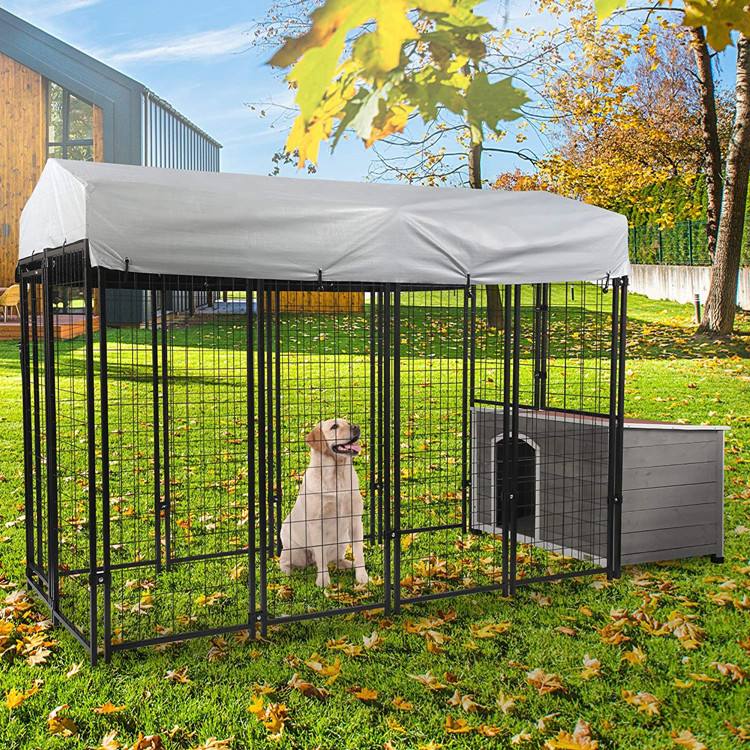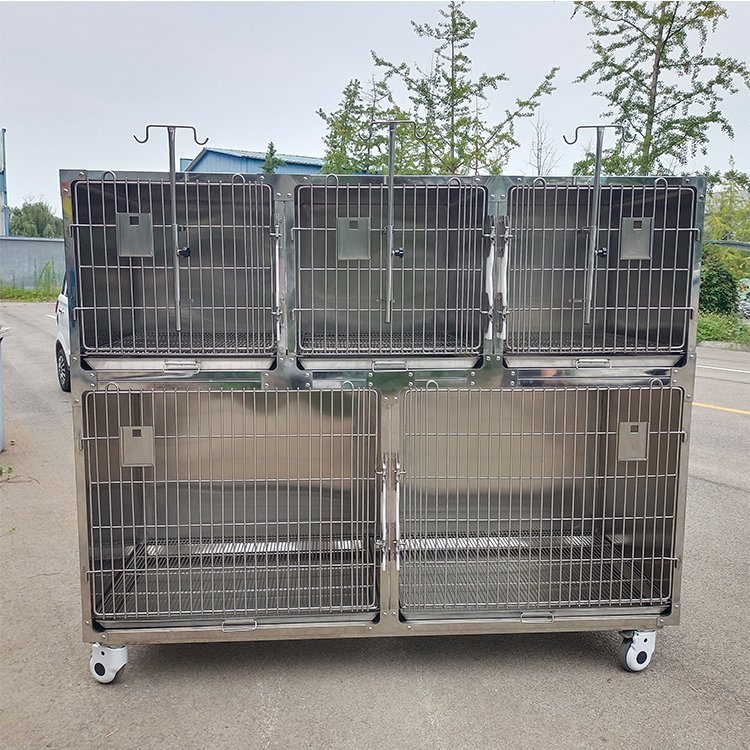The main advantages of metal pet cages
Durable Metal pet cages are usually made of high-strength steel or stainless steel, which is extremely resistant to pressure and corrosion. Whether used indoors or in outdoor environments, metal cages resist oxidation and damage and have a long lifespan.
High safety Compared to traditional plastic or wooden cages, metal cages are more structurally stable, avoiding the risk of breakage or deformation. For active or curious pets, metal cages can effectively prevent them from escaping, providing a higher level of safety.
Good Ventilation Metal crates are usually designed with multiple ventilation holes or gaps to provide adequate air circulation, preventing pets from becoming uncomfortable in the crate due to lack of air circulation. Good ventilation can reduce pet agitation due to high temperatures, especially in summer.
Easy to clean Metal pet cages have a smooth, hard surface that does not easily hide dirt, making them easy to clean on a daily basis. Whether you wash it or wipe it down, it will be clean again quickly. Compared with wooden or fabric pet cages, metal pet cages are easier to clean and maintain.
Points to consider when choosing a metal pet crate
Match the size with the pet When buying a metal pet cage, the size of the cage needs to match the size of the pet. The pet should have enough space to move around inside the cage, but it should not be too spacious, otherwise it will affect its sense of security. The height, width and depth of the cage should be picked according to the breed and weight of the pet.
Choice of material Metal cages are made of various materials, commonly stainless steel, steel wire and aluminium alloy. The durability, weight and price of metal cages vary from material to material. Stainless steel is usually stronger and more durable, but also more expensive; wire cages are lightweight and cost-effective for short-term use.

Chassis design Many metal cages come with a removable plastic chassis to make it easier to clean up your pet’s waste. The chassis should be designed to be non-slip to prevent your pet from sliding around while moving around the cage.
Collapsible or Assembled Designs Many metal pet crates are designed to be collapsible or assembled for easy storage and portability. Choosing a metal pet cage that is easy to store is especially suitable for pet owners who frequently go out or travel.
Proper use of metal pet crates
Managing the Adaptation Period The first time you put your pet in a metal cage, it may be uncomfortable and your pet may seem anxious or restless. During this period, owners can help their pets gradually adapt to the cage environment by providing them with toys, mattresses, food and water.
Regular Cleaning and Maintenance Regularly clean the metal pet cage, especially the chassis and bar sections, to keep the cage clean to help prevent the growth of bacteria. Also, check the structure of the cage for any loose parts to ensure safety in use.
Ensure Proper Ventilation and Lighting Metal pet cages should not be placed in an overly enclosed area, and proper ventilation and light are essential to your pet’s health. Avoid locking your pet in the cage for a long time, especially in hot weather.
Application Scenarios for Metal Pet Cages
Daily use at home Metal pet cages are an important tool in a pet’s daily life and can provide a safe habitat for pets. Especially when the owner is not at home, the cage can prevent pets from messing around or accidentally ingesting harmful objects.
Travelling or transporting For long-distance travel or pet transport, metal pet crates are an ideal choice. Its sturdy shell and ventilated design make it more comfortable and safe for pets during travelling.
Pet training Metal pet crates also play an important role in the behavioural training of pets. By gradually guiding your pet through the time spent in the crate, it helps to improve your pet’s independence and self-control.

